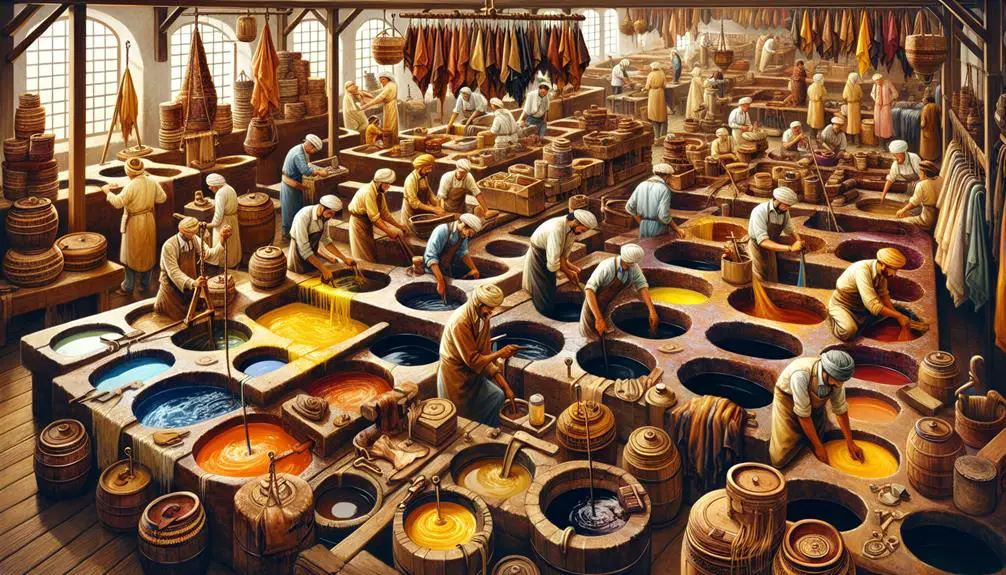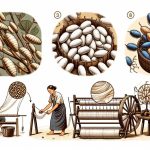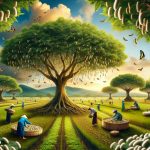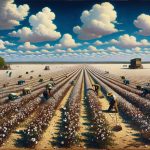I've found out that the major spots for making leather are countries like China, Italy, and Brazil. China actually makes about 80% of the world's leather goods, which is huge! Italy, on the other hand, is famous for its high-end leather items like handbags and shoes. There are also other big players in the leather market, such as India, South Korea, and Russia. They all have unique methods and types of leather they produce, each with its own charm and characteristics. Stick around, and you might find out some pretty cool details on how leather is crafted!
Table of Contents
Key Takeaways
- China is the largest producer, accounting for about 80% of global leather goods.
- Italy is famous for high-quality luxury leather products.
- Brazil also plays a significant role in the global leather market.
- Other notable leather-producing countries include India, South Korea, and Russia.
- Tanneries, where leather is processed, are key facilities in these countries.
Leather Production Locations
Leather is mainly made in countries like China, Italy, and Brazil. These places are huge in the leather game, seriously. China, for example, is a giant here, pumping out about 80% of the world's leather goods. That's not just a lot; it's most of it!
Now, while China leads the pack, don't overlook Italy. They're famous for top-notch leather, especially in luxury goods. Think of those fancy Italian leather handbags and shoes—yeah, that's the good stuff. Brazil's also in the mix, along with India, South Korea, and Russia. Each of these countries has its own flair and techniques that set them apart.
What's interesting is how these countries don't just keep all the leather for themselves. Often, hides are shipped off and turned into products elsewhere. This global shuffle is key to how leather markets work. It's not just about where the leather comes from, but also how and where it's transformed into those sleek, stylish items we all love.
Understanding this gives us a clearer picture of the leather landscape. Knowing who makes what and where helps in getting the best quality and supporting responsible production practices.
Tanning Methods Explained
Let's dive into the various methods used for tanning leather, each with its unique process and results. As someone deeply interested in the leather industry, it's fascinating to see how different tanning methods impact leather production.
| Method | Key Ingredient |
|---|---|
| Vegetable Tanning | Natural plant extracts |
| Chrome Tanning | Chromium salts |
| Aldehyde Tanning | Glutaraldehyde (chrome-free alternative) |
Vegetable tanning is all about using natural stuff, like tree bark. It's not quick, but the leather you get is top-notch. It's perfect for folks who appreciate an eco-friendly approach. Chrome tanning, on the other hand, is a powerhouse in the leather industry. It uses chromium salts, making it faster and more uniform than vegetable tanning. This method dominates because it's efficient and cost-effective.
Lastly, there's aldehyde tanning. This is a newer, chrome-free alternative that's gaining traction for specialized uses. It's particularly interesting if you're into more sustainable options in the leather game. Each method has its perks, depending on what kind of leather you're after and your environmental priorities.
Types of Leather
Exploring the different types of leather, we find a fascinating range from the luxurious and rare to the more commonly used and affordable options. First up, let's talk about genuine leather. It's pretty common and made from animal hides, mainly cow hide or cattle hide. It's durable and has that classic leather look we all know.
Then there's full grain leather. It's top-notch quality stuff, made from the outer layer of the hide. It shows natural imperfections which is really cool. Next, top-grain leather is a bit similar but it's sanded down to get rid of imperfections. It's still high quality but not as raw as full grain.
For those into unique textures, Nubuck leather is where it's at. It's sanded to create a soft, velvety surface. Now, if you're looking for something really fancy, exotic leathers like alligator or ostrich are the go-to. They're rare and scream luxury.
Lastly, if you're budget-conscious, bonded leather might be your pick. It's made from leather scraps that are bonded together. It's definitely more affordable and still gives that leather vibe.
Leather Making Process
After covering the types of leather, I'll now explain how leather is actually made. The whole leather making process starts with tanning. This is where raw animal hides are transformed into the durable and flexible leather we all use.
First off, the hides go through curing. This step involves salting or drying the hides to prevent decay. Next is soaking, where the hides are rehydrated to remove salt and dirt. Then comes liming, a process that removes hair and prepares the hides for tanning by swelling them up.
The core part, tanning, uses different methods to treat the hides. Vegetable tanning uses natural tannins from tree bark, making the leather strong and rich in color. Chrome tanning, on the other hand, uses a solution of chemicals and makes the leather more flexible and water-resistant.
After tanning, the hides are moved to finishing stages. They're trimmed, split to the desired thickness, dyed for color, and go through several quality checks. Each of these steps ensures the leather isn't just usable but also meets high-quality standards. So, that's how we turn raw hides into the leather products we rely on every day.
Environmental Impact
While leather products are useful and often seen as luxury items, their production carries a hefty environmental cost. Let's break it down. Leather production gobbles up a lot of water. We're talking huge volumes here, needed for processing hides. This massive water usage isn't even the worst part.
The real kicker is the waste water production. Imagine all the dirty water, loaded with chemicals, that comes out of tanneries. It's a big pollution problem unless properly treated, which isn't always the case. Then there's the solid waste generation. Scraps and trimmings can pile up, adding to environmental burden.
Chemical waste disposal is another headache. Chemicals like chromium used in tanning can be toxic. If not disposed of correctly, they pose serious health and environmental risks. That's why strict pollution control measures are essential.
Lastly, even after leather is made, preserving it requires care. We use preservation techniques to stop damage like red rot, but these can also impact the environment if not managed well. All these factors combined show just how significant the environmental impact of leather production is. We've got to keep pushing for better methods and stricter controls to minimize these issues.
Ethical Considerations
When we talk about making leather ethically, we've got to consider a few key things.
First, finding animal-free alternatives is crucial as it helps reduce harm.
We also need to ensure workers' rights are respected and that we're cutting down on environmental damage.
Sourcing Animal-Free Alternatives
Exploring animal-free leather alternatives has become essential for those of us looking to make ethical and environmentally conscious choices. Here's a quick look at some key options:
- Vegan leather: A popular cruelty-free choice that doesn't use any animal products.
- Lab-grown leather: Innovatively created in labs, offering a sustainable option without harming animals.
- Mushroom-based materials: These provide a biodegradable alternative that's both eco-friendly and durable.
- Biodegradable alternatives: Options like lab-grown and mushroom-based leathers that naturally break down, reducing environmental impact.
Choosing these leather alternatives helps me avoid animal harm and support more sustainable practices in fashion. It's a win-win for both ethics and the planet.
Labor Rights Compliance
After discussing animal-free alternatives, let's focus on how leather is made under ethical labor conditions. When leather is ethically sourced and responsibly produced, it means there's a strong focus on labor rights. This includes ensuring fair wages and safe working conditions for everyone in the supply chain. I'm talking about real transparency here—knowing how workers are treated and making sure there's compliance with ethical standards.
Brands that care will often have certifications or perform audits to prove their commitment. It's crucial because ignoring labor rights can really backfire with bad publicity and consumer backlash. So, when you're buying leather, looking for these ethical assurances means you're supporting not just quality, but fairness and safety too.
Environmental Impact Reduction
Turning to the environmental side, sustainable leather drastically cuts down on pollution and waste. When we talk about leather production, it's crucial to consider not just the final product, but how it gets made. Here's how ethical considerations play a huge role:
- Reduced water consumption: Less water used means less strain on our ecosystems.
- Minimal chemical waste: Using safer, eco-friendly tanning methods cuts down harmful discharges.
- Ethical sourcing: Ensures materials are obtained responsibly, supporting not just the environment but also communities.
- Efficient waste management: Focuses on recycling and repurposing to minimize landfill impact.
These steps are vital for reducing the environmental impact of leather, making sustainable leather a smarter choice.
Cultural Significance
Tanneries hold a special place in many cultures due to their long history of crafting essential leather goods. These places aren't just factories; they're a bridge to our past. In many communities around the world, tanneries and leather factories embody traditional craftsmanship and heritage. They reflect the unique blend of local traditions and the cultural significance of leather production areas.
Here's a quick way to visualize the connection:
| Location | Tradition | Significance |
|---|---|---|
| Morocco | Hand-dying leather | Tourist attraction |
| Italy | Artisan workshops | Luxury market focus |
| India | Vegetable tanning | Cultural heritage |
These examples show how leather production varies between geographical locations, each adapting to their unique environment and history. It's fascinating how these methods, passed down through generations, still thrive today. They don't just make leather goods; they keep alive the stories and skills of their ancestors. This is what makes each piece of leather more than a product; it's a piece of history, molded by the hands of time.
Leather Alternatives
I'm excited to talk about leather alternatives, especially synthetic and vegan options. These alternatives aren't only kind to animals but also help the planet.
Let's take a closer look at the types of synthetic leather and the benefits of going vegan.
Types of Synthetic Leather
What're the main types of synthetic leather used as alternatives to traditional leather? Here's a quick rundown:
- Polyurethane Leather (PU): This type is more breathable and flexible. It's considered more environmentally friendly and is a popular choice for those looking for sustainable alternatives.
- Polyvinyl Chloride Leather (PVC): Known for its durability and water resistance, PVC is cost-effective but less eco-friendly due to the harsh chemicals involved in its production.
- Cork Leather: A natural, sustainable option that offers a unique texture and is completely animal-friendly.
- Piñatex (Pineapple Leather): Made from pineapple leaves, this material isn't only vegan but also contributes to waste reduction.
These synthetic leather products are great for anyone seeking cruelty-free and stylish options.
Benefits of Vegan Leather
Vegan leather offers a sustainable and ethical alternative to traditional leather, avoiding the use of animal products and reducing environmental damage. It's made from synthetic materials like PU or PVC, making it a cruelty-free choice. I'm all for supporting eco-friendly options that don't compromise on style.
Here's a quick look at the benefits:
| Benefit | Description | Impact |
|---|---|---|
| Cruelty-Free | No animal exploitation | Ethical |
| Fewer Toxic Chemicals | Reduces need for tanneries known for pollution | Environmental Safety |
| Eco-Friendly Materials | Made from sustainable synthetic materials | Reduces Environmental Harm |
| Stylish Options | Mimics real leather | Consumer Satisfaction |
Opting for vegan leather means I'm part of a movement that values animal rights and aims to cut down on environmental harm. It's a win-win for both the planet and my wardrobe!
Further Reading Recommendations
To dive deeper into how tanneries operate, you might want to check out some books and articles dedicated to the leather industry. Tanneries are fascinating places. They're where the magic of turning raw animal hides into usable leather products happens. Each tannery, found in numerous leather-producing countries, follows various processing stages. These stages transform hides through the tanning process, making leather durable and ready for use.
Here are a few resources that can give you a more in-depth understanding:
- 'Leather: History, Technique, Projects' by Josephine Barbe – This book covers everything from the basic tanning process to making finished products.
- 'Tanning Chemistry: The Science of Leather' by Anthony D. Covington – It dives into the scientific aspects of how tanneries convert raw hides into leather.
- 'The Leatherworking Handbook' by Valerie Michael – A practical guide for those interested in working with leather themselves.
- 'Sustainable Leather Management' by various authors – Focuses on environmental practices within the leather industry.
These reads will definitely sharpen your understanding of how tanneries operate and their crucial role in the location where leather is crafted.
Frequently Asked Questions
What Do You Call a Place Where Leather Is Made?
I'd call a place where leather is made a tannery. It's where they turn animal hides into leather, using various processes. Tanneries range from small workshops to large factories.
What Are Leather Factories Called?
Leather factories are called tanneries. They're where animal hides are transformed into leather through the tanning process, using specialized machinery and tools essential for producing high-quality, durable leather products.
Where Is Leather Made?
Leather's made in tanneries located worldwide, including countries like China, Italy, and Brazil. These facilities specialize in transforming raw hides into the durable, versatile material used in various products.
What Is a Place Where Leather Goods Are Manufactured?
I've learned that a place where leather goods are manufactured is called a tannery. They're key for turning raw animal hides into products like bags, shoes, and jackets. It's essential in the leather industry.
- How Does Ring Spun Cotton Affect Garment Fit and Shape Retention? - August 13, 2024
- What Are the Challenges in Producing Ring Spun Cotton? - August 13, 2024
- Is Ring Spun Cotton Suitable for Plus-Size Clothing? - August 13, 2024






